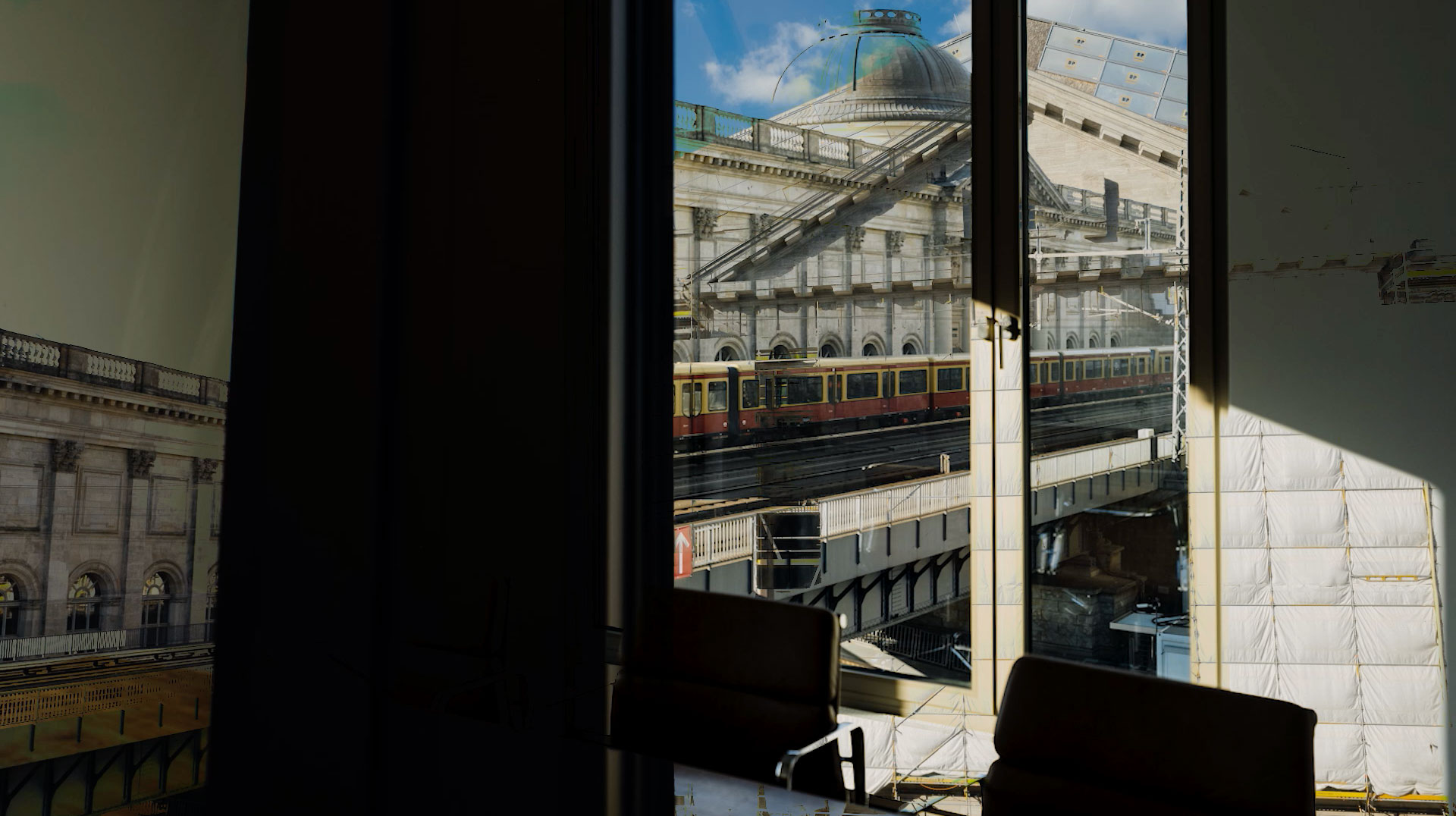The presence of artificial intelligence (AI) has been influencing and changing the art market for years and is increasingly raising new and far-reaching legal questions in art law that are relevant for artists, collectors, gallery owners, curators and investors.
The introduction of AI into art and the associated use of AI tools is not only changing artistic creation, but also the legal and economic framework conditions of the art market for its players. In particular, copyright issues and the resulting value-creating effects are becoming increasingly relevant and offer new challenges and opportunities in art law.
What role does AI art play?
The European Parliament defines AI as „the ability of a machine to imitate human abilities such as reasoning, learning, planning and creativity“. This is because it enables „technical systems to perceive their environment, deal with what they perceive and solve problems in order to achieve a specific goal.“
Both AI artworks, for example artworks created generatively by AI, and art in which AI serves as a technical tool are not unknown to the art world. As early as 1986, artist Vera Molnár, a pioneer of AI art, began using programming languages to create new works of art at random.
Today, there are many examples of AI art rapidly gaining importance in the art world and in art law, and the economic impact on the art market is considerable. AI art is already circulating as a commodity on the art market, being auctioned by major auction houses and exhibited in well-known museums.
With his AI artwork „Memories of Passerby I“, the German artist Mario Klingemann created one of the first AI artworks to be offered for sale on the art market. He sees AI art as an important development in the art market: „The art of this work is the code and the system, not the work itself - an important historical and conceptual milestone in the history of the art market.“
AI art has also realised high profits at auction in the past. The AI portrait of a fictional person „Portrait of Edmond Belamy“ by the French artist collective Obvious was auctioned at Christie's for almost half a million dollars in 2017.
And in 2023, the world-famous Museum of Modern Art in New York (MoMa) showed the AI artwork „Unsupervised“ by AI artist Refik Anadol on a huge canvas. Anadol uses the works of other artists for his AI art: „From Van Gogh to Picasso to Kandinsky, there are incredible, inspiring artists in this artwork, in this AI dream world, who have shaped different techniques.“
Established artists and museums are also already using AI systems to push the boundaries of art and make it more accessible to the public. For example, British artist Damien Hirst used AI as a tool to create the „Spot Paintings“ series and in 2022, the Louvre Museum in Paris introduced the virtual assistant to provide visitors with information about the artworks. Such developments affect both the art market and art law.
Based on these examples, it is easy to see that AI will continue to influence the art market and art law and create new scope, opportunities and challenges. Monitoring this development is important for all players in the art market, such as gallery owners, collectors, investors and curators, so that they can act with foresight both legally and economically.
No regulations in art law
There are no specific and customised legal regulations on the use of AI in art law. Although there are general regulations on the use of AI systems at European and international level, there are still no national regulations; however, these have no specific reference to art law.
In European law, an AI regulation on the use of AI (AI Act) was adopted for the first time in 2024, but it does not contain any clear regulations in art law. The AI Act generally establishes obligations such as transparency and documentation requirements for providers and users of AI in order to create better conditions for the development and use of AI systems.
At the level of international law, there are also no specific regulations in art law, but merely general principles and recommendations for the use of AI.
It is obvious that this raises new questions in art law that require sound legal categorisation and regulation. Anyone operating in the art market, whether as an artist, collector, curator, investor or gallery owner, should develop strategies with the help of legal expertise in order to deal with this responsibly in a creative and forward-looking manner and to protect artists' rights.
Particularly with a view to strategic positioning on the art market, players in the art market should turn to people with expertise in art law and knowledge of the sector who follow the changes in the art market and know how to react to them with sensitivity.
Copyright protection
Copyright issues are particularly important in art law. According to §11 of the German Copyright and Related Rights Act (UrhG), copyright protects the author in his intellectual and personal relationship to the work and in the use of the work. It also serves to secure appropriate remuneration for the use of the work.
On the one hand, it is questionable in art law whether AI art itself can claim copyright protection and, on the other hand, to what extent copyright law protects against the use of existing art to generate new works of art. The answer to these questions is important if artists or rights holders want to defend themselves against a possible infringement of their intellectual property and protect their artworks and creativity. Economic considerations in the art market also go hand in hand with the clarification of copyright issues.
Is authorship of the AI possible?
A significant decision in art law was handed down by the Federal Court in Washington D.C. in 2023. The court ruled that a work of art created entirely by an AI could not receive copyright protection (Thaler v. Perlmutter, No. 22-CV-384-1564-BAH). The court denied the plaintiff Stephen Thaler copyright recognition for his AI artwork, which was entirely conceived and created by an AI. The court ruled that a work of art created without a significant human contribution is not protected by copyright.
To date, no comparable decision has been issued in German art law, but a trend is evident in German copyright law. According to §2 (2) UrhG, the existence of a work protected by copyright requires a „personal intellectual creation“ that reflects the personality of the author by expressing their „free creative decision.“
This means that a work of art that was essentially created by an AI is not eligible for copyright protection under German law either. One of the reasons given for this is that the author cannot make any human intervention in the way the AI works and that merely instructing the AI, for example „prompting“, does not fulfil the level of copyright protection.
Protection of existing works of art
Another question concerns the infringement of artists' copyrights and the protection of their creative work under art law if the AI uses existing works of art as a source to generate art. For example, if an AI user wants to generate a work of art „in the style’“ of a well-known artist, the AI accesses and processes photos or databases containing works of art by this artist. This may constitute an infringement of the rights of the artist concerned or the rights holder.
The lack of transparency is particularly problematic for art law, as AI systems have not yet provided any information about the „creative process" and which works of art used are protected by copyright and to what extent and on the basis of which criteria the AI processes them.
Artists must use art law to protect their intellectual property against processing by an AI and legally utilise the possibilities of licensing. This is because copyright represents an artist's exclusive right to their work and thus secures commercial exploitation and generates sources of income for artists. These copyright claims must be enforced. The founder of the „Open Impressionism“ style of painting, Erin Hansen, comments: „The original artist must be honoured in some way. That's what copyright is for.“
The clarification of copyright and authorship in art law is also important for other players in the art market such as investors and collectors. The existing copyright to a work of art is a value-forming factor, because only if the artist is also recognised as the author of a work of art can he exclude third parties from exploiting his work. Otherwise, anyone can make a reproduction of the work of art, which significantly reduces the commercial value (see §§16ff. UrhG).
The unresolved copyright issues in art law are therefore important for all players in the art market. Legal expertise in art law should be obtained in view of the lack of case law, in particular in order to protect copyrights and to be able to act in a commercially sensible manner.
Résumé
The existence and use of AI opens up new opportunities and challenges in the art market, including economic ones, and at the same time raises new legal questions. All players in the art market should follow this development and act with foresight in order to protect their copyrights and better categorise value developments.
„The rights and creative achievements of artists must be protected.“ Says dtb-lawyer and art law expert Leon van Lee. „Players in the art market such as artists, investors, collectors and gallery owners should keep an eye on the development of artificial intelligence in the art market. In the course of this development, creative and economic opportunities may also arise to position themselves sustainably in the changing art market.“
Status 16.04.2025

